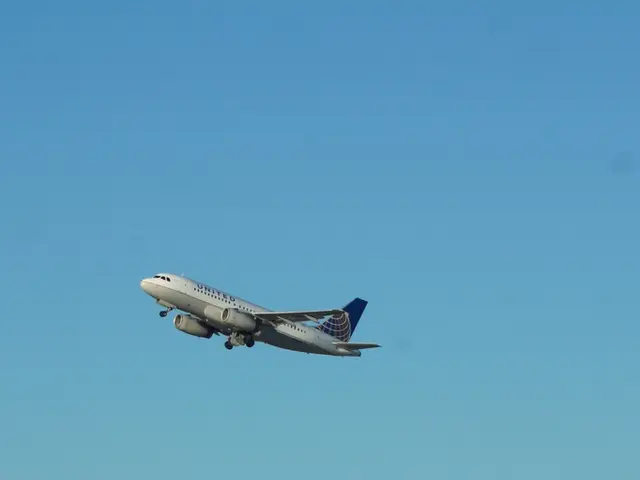Piloting Privileges Abound: A Guide to Acquiring Pilot Licenses
Various Pilot Certifications: Breakdown (Student, Leisure, Private, Professional, ATP, and Others)
Getting a pilot's license is an exciting adventure, with each license offering different privileges - from weekend fun flying to a career as a pilot. Here's a concise yet enlightening guide to the various types of pilot licenses, their requirements, and exceptions.
Student Pilot Certificate
The first rung on the ladder to becoming a pilot comes in the form of a student pilot certificate. To qualify, you simply need to be at least 16 years old (or 14 for gliders or balloons) and apply through the Integrated Airman Certification and Rating Application (IACRA) website. Although it requires no ground instruction, flight training, or knowledge test, this certificate is a necessary step to obtain higher pilot certification.
Sport Pilot Certificate
For those seeking aviation purely for fun, the sport pilot certificate is the ideal choice. Aside from the usual requirements, aspiring sport pilots need to be at least 17 years old (or 16 for glider or balloon), log a minimum of 20 flight hours, and hold a valid US State driver's license or at least a third-class medical certificate. As a sport pilot, you're only allowed to pilot aircraft with a Maximum Takeoff Weight (MTOW) of 1320 pounds, carry no more than one passenger, and fly only during the daytime up to 10,000 feet MSL (or 2,000 AGL).
Recreational Pilot Certificate
Though the recreational pilot certificate is becoming largely obsolete, it still exists for the time being. To secure this certificate, you need to be at least 17 years old, log a minimum of 30 flight hours, hold either a student or sport pilot certificate, and meet the standard medical requirements, training, and testing, just like other pilot licenses. The recreational pilot certificate's restrictions are similar to that of the sport pilot certificate - the main difference lies in instructor endorsements.
Private Pilot License (PPL)
Aiming for more freedom? Then consider getting a private pilot license. To obtain your PPL, you must be at least 17 years old (or 16 for glider or balloon), hold either a student, sport, or recreational pilot certificate, and have at least a third-class medical certificate. You should also log a minimum of 35 or 40 flight hours, depending on whether the flight school is Part 61 or Part 141. Flying any aircraft for non-commercial purposes is the primary benefit of a PPL, as you can fly at night and carry several passengers.
Commercial Pilot License (CPL)
If you're looking to make a living as a pilot, a CPL is essential. While not a ticket to an airline job right away, a CPL allows you to earn money as a skydiving, photography, or pipeline patrol pilot among other entry-level aviation jobs. A CPL demands much higher piloting ability than a PPL and comes with more stringent requirements, such as being at least 18 years old, holding a private pilot certificate, and having at least a second-class medical certificate. You must also log at least 190 or 250 hours of flight time, depending on your choice of flight school.
Flight Instructor Certificate
Your career prospects are limited as a commercial pilot. To increase your flight hours and keep your piloting skills sharp, consider becoming a certified flight instructor (CFI). In addition to the common requirements, you need to be at least 18 years old and hold a commercial or airline transport pilot certificate. As a flight instructor, you can train pilots, conduct flight reviews, and issue endorsements required for pilot certificates, ratings, knowledge tests, and checkrides.
Airline Transport Pilot (ATP) Certificate
Reaching the summit of pilot licenses, the ATP certificate is a requirement for most airline jobs. To obtain your ATP certificate, you must demonstrate immaculate aeronautical knowledge, flight proficiency, and be of good moral character. On top of the common requirements, you need to hold a commercial pilot certificate with an instrument rating, have a first-class medical certificate, and complete an Airline Transport Pilot Certification Training Program (ATP-CTP) for a multiengine rating or when issued concurrently with a type rating.
Remote Pilot Certificate
You don't need a pilot certificate to fly drones for recreation, but you must abide by certain rules, procedures, and guidelines. To operate a drone for commercial purposes, however, you must obtain a remote pilot certificate. How? Well, you need to meet specific requirements if you're a first-time pilot, such as being at least 16 years old, being in a physical and mental condition to safely fly a drone, passing the initial aeronautical knowledge exam, and being able to easily access the drone during all UAS operations.
Remember, exceptions to common pilot licensing requirements exist, such as regulatory exemptions for emergency operations, alternative documentation processes, adjusted flight time or experience crediting, and varied medical certification standards depending on license type and operational use. Explore the fascinating world of piloting and embark on an unforgettable journey!
- A commercial pilot can find work in various industries such as skydiving, photography, or pipeline patrol, but to do so, they must hold a Commercial Pilot License (CPL) which requires at least 18 years of age, a private pilot certificate, and at least a second-class medical certificate, in addition to logging at least 190 or 250 hours of flight time.
- For those who wish to become flight instructors, they must meet additional requirements such as being at least 18 years old and holding a commercial or airline transport pilot certificate, allowing them to train pilots, conduct flight reviews, and issue endorsements required for pilot certificates, ratings, knowledge tests, and checkrides.
- If you're interested in operating drones commercially, you need to obtain a remote pilot certificate. To do so, you must meet specific requirements such as being at least 16 years old, passing an initial aeronautical knowledge exam, and being able to easily access the drone during all UAS operations.
- Finance plays a significant role in the aviation industry, as obtaining pilot licenses involves various costs including flight training, exam fees, and medical certificates, which can make it challenging for some individuals to pursue a career in aviation.
- The transportation sector relies heavily on pilots to ensure the safe and efficient movement of people and goods. Whether you're seeking aviation as a career or a hobby, there are various types of pilot licenses available, such as the Private Pilot License (PPL), which allows flying any aircraft for non-commercial purposes and can be obtained after meeting requirements including being at least 17 years old (or 16 for glider or balloon), holding either a student, sport, or recreational pilot certificate, and having at least a third-class medical certificate.








